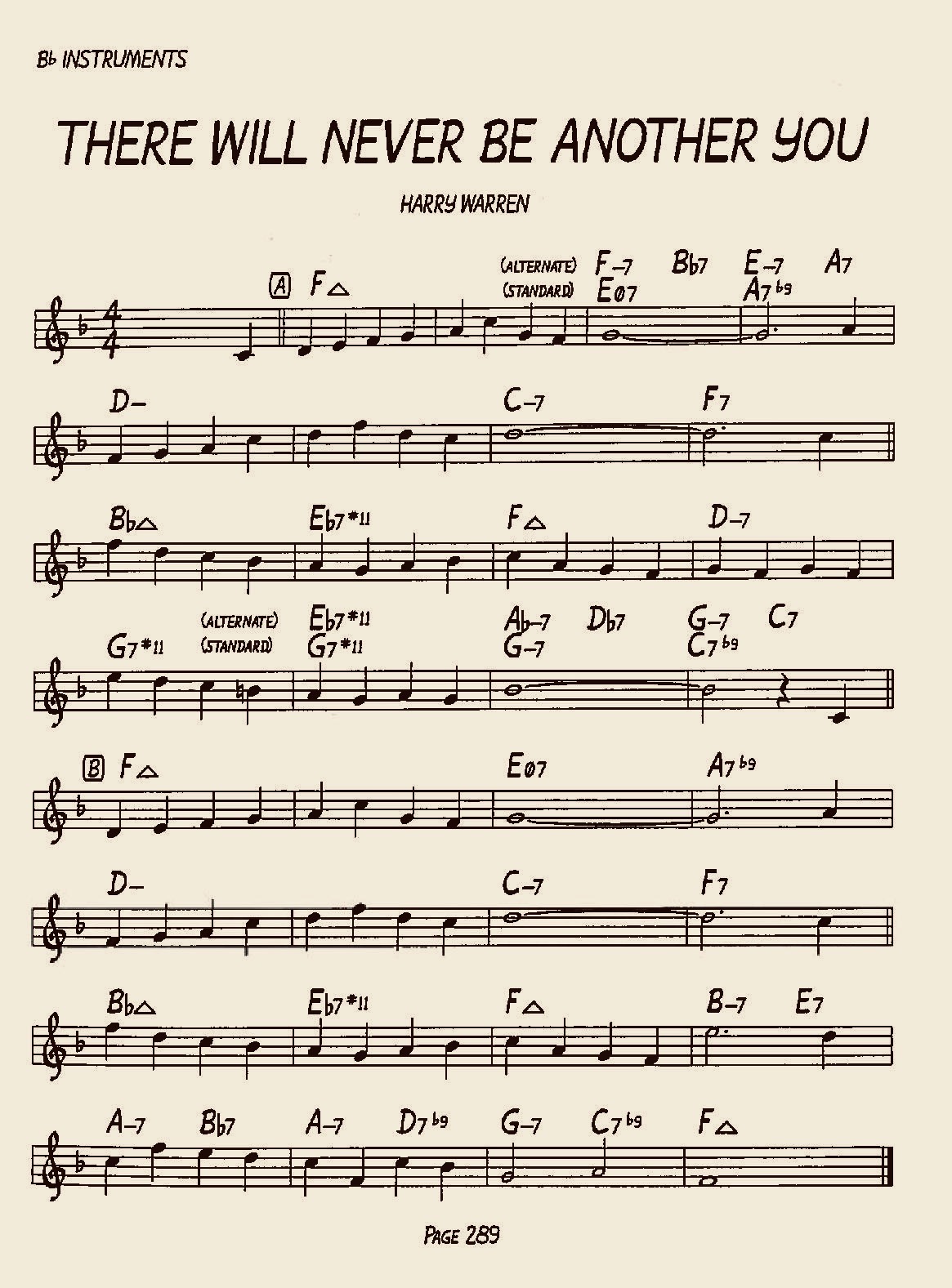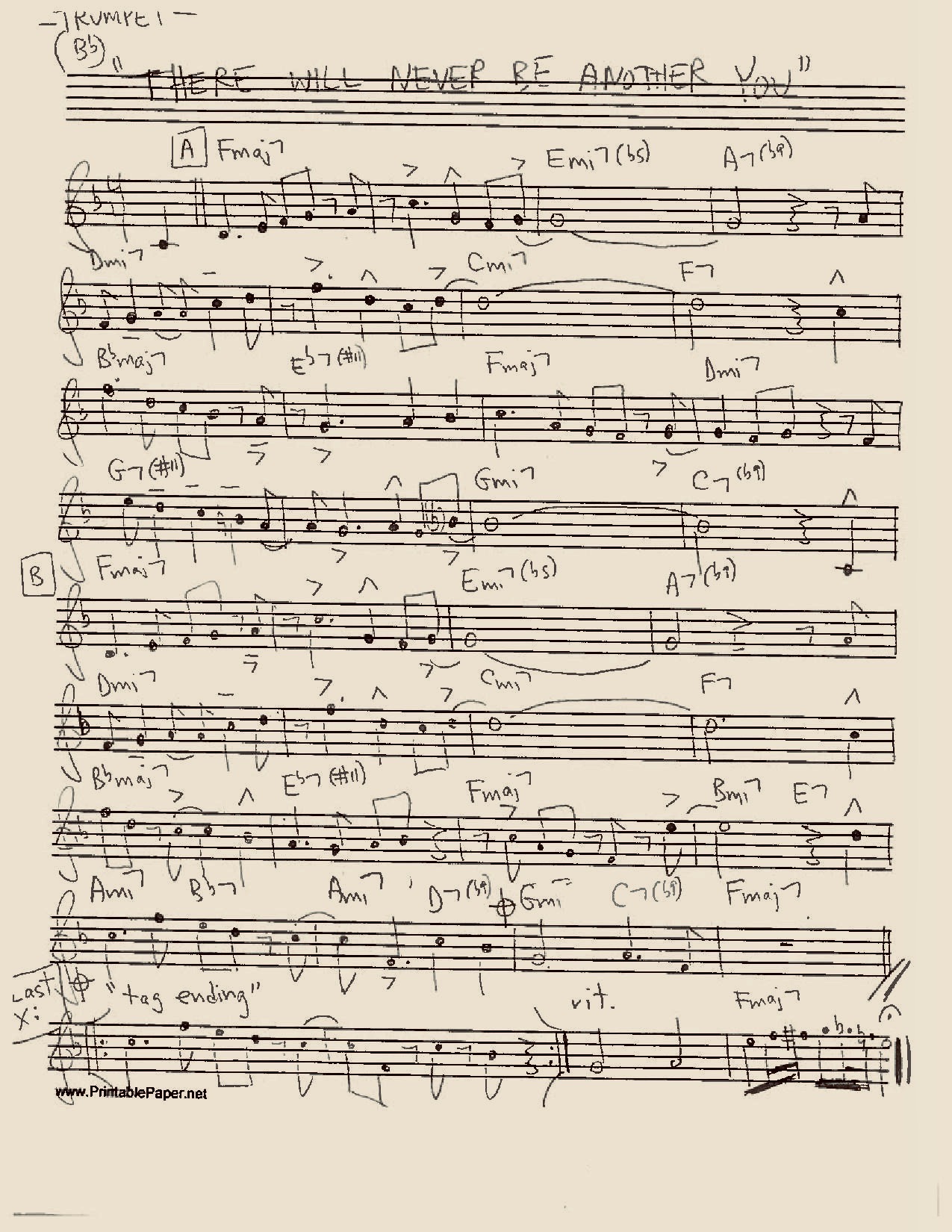Interpreting melodies is an essential, yet often overlooked skill for young jazz players and arrangers. This is understandable. How could we expect anything different when instrumentalists are exclusively taught and expected to play music exactly as it is presented to them in lessons and band class?
But, within a jazz quartet, it would sound ludicrous to play a melody as written in a fake book. Fake books generally render tunes in quartet notes, half notes and whole notes — all on the beat, with no syncopation. As an example, here is the jazz standard, “There Will Never Be Another You.” It is taken from the Colorado Cookbook, a fake book, painstakingly prepared by trumpeter Bob Montgomery:
uninterpreted, lead sheet version:
As you can see, the page is easy to read and follow. This lead sheet serves its purpose in presenting the song in a straightforward manner. As a result, it is easy to visualize the form and memorize. However, it would sound absolutely WRONG, if left uninterpreted in performance. An instrumentalist’s goal is to phrase a melody as sung by a good singer. Singers like Ella Fitzgerald, Sarah Vaughn and Tony Bennett are masters of phrasing and subtle syncopation.
I was reminded of the importance of interpreting melodies when introducing my 13-year-old son to some jazz repertoire this summer. Even though we had listened to Blue Mitchell, Dexter Gordon and other jazz greats play There Will Never Be Another You, he didn’t make the connection that the melody needed to be rhythmically interpreted. Pointing out the difference and demonstrating it in different ways helped, but it was still a new skill that had to be learned.
Ultimately, I wrote out the following version of the melody for him.
interpreted, slightly syncopated version:
It was helpful for him to see how different the two versions look. Experiencing how the tune felt better with a few subtle changes was equally important.
To clarify, jazz musicians use straightforward lead sheets (like the top version) as a guide; but when interpreting melodies, what they play (“off the cuff”) is more likely to resemble my scrawled rendition.
Here is a video of my son playing the tune at a gig we did this past September in Willimantic, CT. We are joined by guitarist, Doug Maher.
While I don’t plan to write out all of Logan’s heads for him, I think this was a valuable exercise and a necessary first step. It is also worth noting that he didn’t play the page exactly as written. I celebrate this! Now he knows that melody interpretation is an expectation when playing jazz standards. He understands that flexibility is allowed and appropriate. I will keep encouraging him to observe and copy how interpreting melodies is done on recordings until it comes more naturally to him. Likewise, I will continue preaching this message to my students – both as players and as arrangers.


